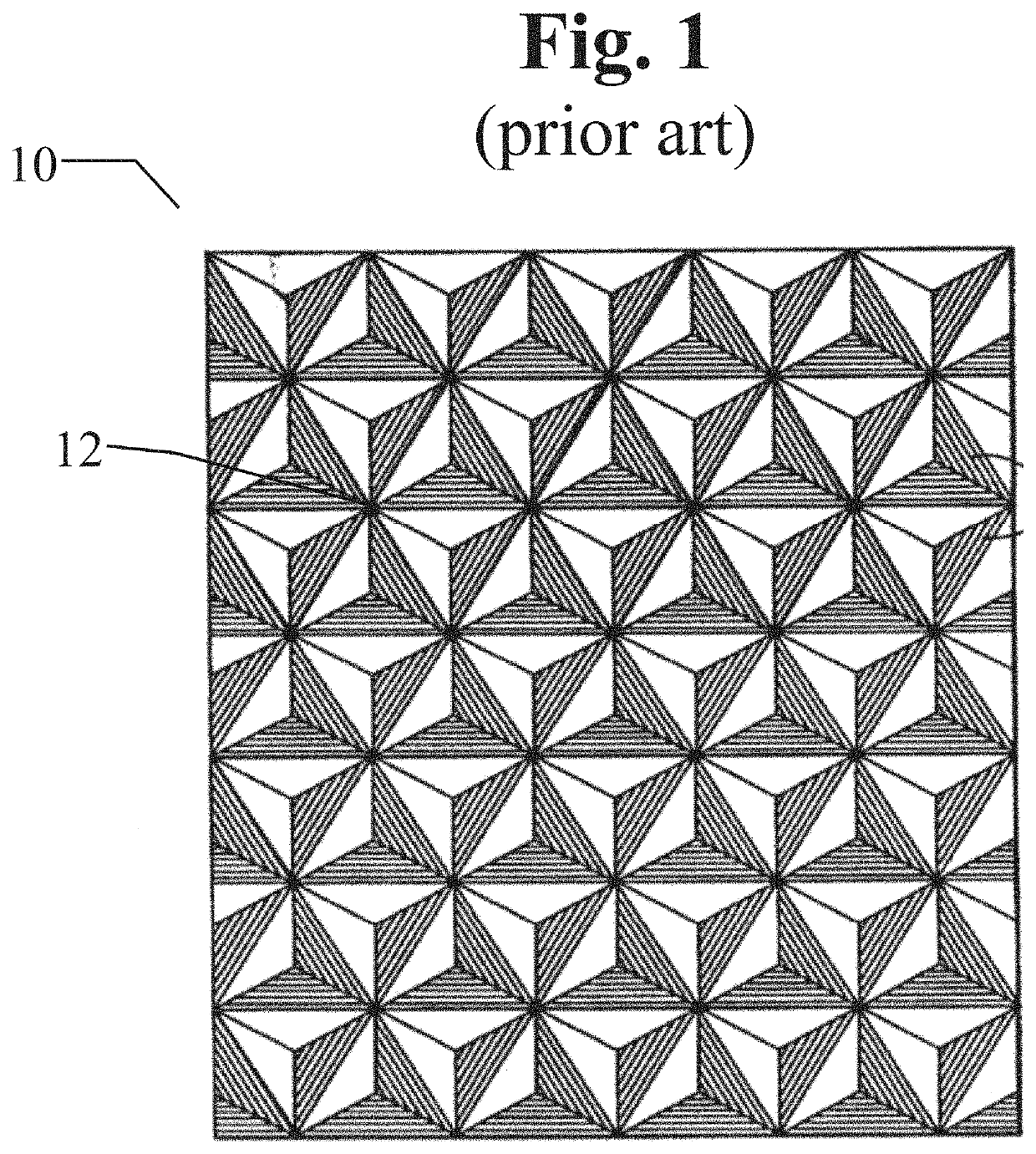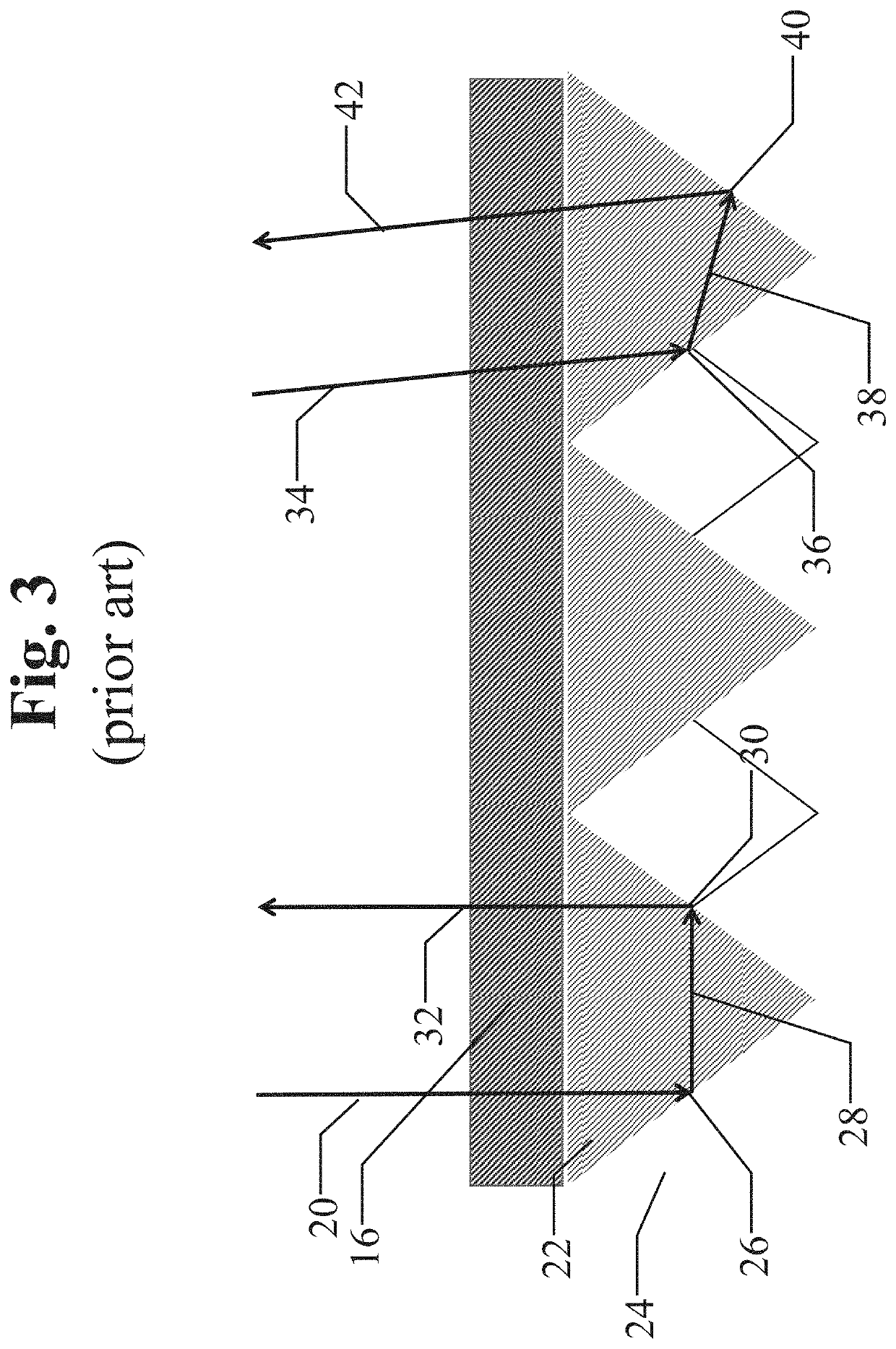Methods and apparatus for ultrawide entrance angle reflective articles for use with autonomous vehicle machine vision systems
a machine vision system and ultrawide entrance angle technology, applied in the field of optical elements, can solve the problems of reducing the retroreflectivity of the sheeting, the disadvantage of metallization in reducing the overall retroreflectivity of the article, and the inability to maintain the surface integrity of the sheeting, so as to achieve accurate and safe operation of the vehicle and reduce the effect of optical detection
- Summary
- Abstract
- Description
- Claims
- Application Information
AI Technical Summary
Benefits of technology
Problems solved by technology
Method used
Image
Examples
Embodiment Construction
[0053]FIGS. 1 and 2 illustrate a portion of a typical replicated cube corner retroreflective sheet 10 known in the prior art. Referring to both FIGS. 1 and 2, reference 12 generally designates one of the minute cube corner elements of formations prism features disposed in an array on one side of sheeting 10. Each retroreflective element 12 has the shape of a trihedral prism with three exposed planar faces, substantially perpendicular to one another, and an apex axis defined by a line intersecting the apex of the trihedral prism that is equidistant to each of the planar faces. The angle between the faces of the trihedral prism is the same for each cube corner element in the array and will be about 90 degrees.
[0054]As is illustrated in FIG. 2, cube corner elements 12 in sheet 10 can be all of the same dimensions and aligned in an array or pattern of rows and columns, the bases being in the same plane, and adjacent elements being contiguous at the edges of their bases such that there a...
PUM
 Login to View More
Login to View More Abstract
Description
Claims
Application Information
 Login to View More
Login to View More - R&D
- Intellectual Property
- Life Sciences
- Materials
- Tech Scout
- Unparalleled Data Quality
- Higher Quality Content
- 60% Fewer Hallucinations
Browse by: Latest US Patents, China's latest patents, Technical Efficacy Thesaurus, Application Domain, Technology Topic, Popular Technical Reports.
© 2025 PatSnap. All rights reserved.Legal|Privacy policy|Modern Slavery Act Transparency Statement|Sitemap|About US| Contact US: help@patsnap.com



